Abandoned History: The Life and Times of Edsel, a Ford Alternative by Ford (Part V)

Thus far in Abandoned History’s coverage of Edsel, we’ve learned about the brand’s introduction to the American consumer, and the immediate confusion its pricing caused. As far as product, thus far we’ve covered two of the four single-year Edsel models: Pacer and Citation. While those two models were sedans, there were also two Edsel wagons that bit the dust after one year. Meet the Roundup.
The Roundup was the cheapest wagon on sale at Edsel, though it shared the same 116-inch wheelbase as the other two Edsel wagons. Much of Ford’s full-size wagon product was closely related at the time, and in 1958 Ford’s lineup consisted of four different wagons that were largely differentiated via trim.
Two-door wagon offerings from Ford included the short-lived Del Rio, a replacement for the unsuccessful Parklane. The two-door sporty wagon was a relevant but declining segment at the time, and Ford struggled to compete against the likes of the Chevy Nomad and Pontiac Safari. Worth noting, that the Del Rio was also sold as Del Rio Ranch Wagon on some occasions. Separately, the Ranch Wagon was a longer-term nameplate at Ford and was available in two- and four-door versions. The Ranch Wagon was sold to the entry-level full-size wagon buyer and was the cheapest wagon at Ford.
A large six- or nine-passenger wagon held new appeal to the upscale family buyer in the Fifties: Customers desired them laden with chrome, wood paneling, and plenty of options. At Ford, wood paneling was reserved for the most expensive wagon, the Country Squire. For customers who couldn’t spring for the Di-Noc, there was the similar but more affordable Country Sedan. Upmarket domestic wagons of the era were always four doors, and neither the Country Sedan nor Country Squire was available with two.
Edsel’s Roundup was a massaged version of the Ranch Wagon, but unlike its Ford sibling was available only in two-door guise. Power was provided by one engine, a 361 cubic inch (5.9-liter) FE series V8. The engine was shared with the Ranger, Edsel’s base model sedan. New for ‘58, the 361 was considered an Edsel engine and was offered in five of seven Edsel models (Ranger, Pacer, Villager, Roundup, and Bermuda.)
The first FE series engine in any car, it was also added to 1958 Ford and Meteor cars in the Canadian market but was not used in any retail Fords in the United States. The engine was sold in the United States only for 1958 and only in Fords sold to law enforcement or emergency services fleet customers. In that use, it was sold as the Police Power Pack.
In Roundup usage the engine had a 10:5:1 compression ratio, which meant 303 horsepower and 400 lb-ft of torque. With a four-barrel carb, the OHV engine was detuned slightly for more expensive Edsel models like the Corsair and Villager. The Roundup was available with either a three-speed manual or a new three-speed Cruise-O-Matic automatic.
Because the Roundup was a basic model, the troublesome Teletouch transmission buttons in the steering wheel were an optional extra. In terms of size, the Edsel was slightly larger than its Ford counterpart because of its styling. While the Ranch Wagon was 203.5 inches long, the Edsel was 205.4”. Other dimensions were similar, though the Roundup was heavier than the Ranch Wagon as the Ford had a standard inline-six.
Like other Edsel models, the Roundup received front and rear clips in fine Edsel styling. And like other Edsels, the changes made to a Ford or Mercury to turn it into an Edsel often made it look worse. The Ranch Wagon of 1958 was a nice-looking design, with quad headlamps and a two-tier chromed mesh grille. The Roundup used the quad headlamps of the Ford but changed out the rest of the front end.
A vertical Edsel horse collar grille displayed the company’s name in a vertical orientation, just like other Edsel models. Additional horizontal grilles flanked the central grille and wrapped around the front fender. Turn indicators were integrated into the horizontal grilles, which was really the only nice design touch at Edsel. The Ranch Wagon’s sensible chrome bumper was replaced by the Edsel two-piece design.
From a side view, there were only minimal alterations in the sheet metal in the transition from Ranch Wagon to Roundup. Pillars, roof, glass area, and sliding side windows were shared between both models. Paint schemes varied between the two wagons, as the Ford had a chrome trim strip from its front fender to just aft the door that was painted a secondary color, along with the hood.
The Roundup had its secondary paint color on its roof and within the rear fender trim design. Unlike the other Edsels we’ve covered thus far, the Roundup did not receive a scallop design in its rear fender. The shape was replicated with trim, but the low price of the wagon did not warrant a change to the metal. Rear fins were identical between the Ford and Edsel.
Like other ‘58 Fords, the Ranch Wagon had an unusual rear lamp arrangement of four ovoid shapes contained in two larger ovals. While the Ranch Wagon’s rear was less attractive than its front end, the Roundup’s rear quarters were even worse than its own front end. Unlike the Ranch Wagon, the tailgate of the Roundup was flat to make way for Edsel’s special tail lamp design.
And it was really something. V-shaped (or boomerang if you prefer) brake lamps were not similar to the Edsel sedans we’ve reviewed thus far. They stuck out on fins well past the tailgate, and the V pointed inward toward the middle. The tail lamps were set inside circular chrome dishes and were confusing to the eye. If a fellow motorist were behind a Roundup that indicated to the right, its brake lamp would blink and point to the left! Today it’s almost hard to believe the design passed through to production.
Inside, the Roundup received the special Edsel dash treatment with its drum-type speedometer but was limited in other special features given its entry-level status. To differentiate it from the Ranch Wagon, it had black rubber floors, standard ashtrays front and rear, armrests, an interior dome light package, and a headliner all in white vinyl. A split front seat was also a standard feature, so passengers could actually get in the back.
With its special looks and a V8 engine off-limits to Ranch Wagon customers, the Roundup asked $2,876 ($29,793 adj.) its one and only year. That was notably more expensive than the basic Ranger sedan, which started at $2,484 ($25,732 adj.). However, the Roundup was considerably more expensive than the Ranch Wagon, which asked just $2,504 ($25,939 adj.) that same year. For comparison, the much more luxurious Country Sedan was $2,771 ($28,705 adj.), still less expensive than the base Roundup. The wood-clad Country Squire asked $2,901 ($30,052 adj.) which made the Roundup’s pricing look even more ridiculous.
As always, the proof was shown in the sales pudding. Just 924 of Edsel’s 63,110 sales in 1958 were Roundups. But even with that paltry sales figure, the Roundup sold better than the other one-year Edsel wagon - the Bermuda. But we’ll save that for Part VI.
[Images: Ford, seller, seller]
Become a TTAC insider. Get the latest news, features, TTAC takes, and everything else that gets to the truth about cars first by subscribing to our newsletter.

Interested in lots of cars and their various historical contexts. Started writing articles for TTAC in late 2016, when my first posts were QOTDs. From there I started a few new series like Rare Rides, Buy/Drive/Burn, Abandoned History, and most recently Rare Rides Icons. Operating from a home base in Cincinnati, Ohio, a relative auto journalist dead zone. Many of my articles are prompted by something I'll see on social media that sparks my interest and causes me to research. Finding articles and information from the early days of the internet and beyond that covers the little details lost to time: trim packages, color and wheel choices, interior fabrics. Beyond those, I'm fascinated by automotive industry experiments, both failures and successes. Lately I've taken an interest in AI, and generating "what if" type images for car models long dead. Reincarnating a modern Toyota Paseo, Lincoln Mark IX, or Isuzu Trooper through a text prompt is fun. Fun to post them on Twitter too, and watch people overreact. To that end, the social media I use most is Twitter, @CoreyLewis86. I also contribute pieces for Forbes Wheels and Forbes Home.
More by Corey Lewis
Latest Car Reviews
Read moreLatest Product Reviews
Read moreRecent Comments
- Zerofoo @VoGhost - The earth is in a 12,000 year long warming cycle. Before that most of North America was covered by a glacier 2 miles thick in some places. Where did that glacier go? Industrial CO2 emissions didn't cause the melt. Climate change frauds have done a masterful job correlating .04% of our atmosphere with a 12,000 year warming trend and then blaming human industrial activity for something that long predates those human activities. Human caused climate change is a lie.
- Probert They already have hybrids, but these won't ever be them as they are built on the modular E-GMP skateboard.
- Justin You guys still looking for that sportbak? I just saw one on the Facebook marketplace in Arizona
- 28-Cars-Later I cannot remember what happens now, but there are whiteblocks in this period which develop a "tick" like sound which indicates they are toast (maybe head gasket?). Ten or so years ago I looked at an '03 or '04 S60 (I forget why) and I brought my Volvo indy along to tell me if it was worth my time - it ticked and that's when I learned this. This XC90 is probably worth about $300 as it sits, not kidding, and it will cost you conservatively $2500 for an engine swap (all the ones I see on car-part.com have north of 130K miles starting at $1,100 and that's not including freight to a shop, shop labor, other internals to do such as timing belt while engine out etc).
- 28-Cars-Later Ford reported it lost $132,000 for each of its 10,000 electric vehicles sold in the first quarter of 2024, according to CNN. The sales were down 20 percent from the first quarter of 2023 and would “drag down earnings for the company overall.”The losses include “hundreds of millions being spent on research and development of the next generation of EVs for Ford. Those investments are years away from paying off.” [if they ever are recouped] Ford is the only major carmaker breaking out EV numbers by themselves. But other marques likely suffer similar losses. https://www.zerohedge.com/political/fords-120000-loss-vehicle-shows-california-ev-goals-are-impossible Given these facts, how did Tesla ever produce anything in volume let alone profit?





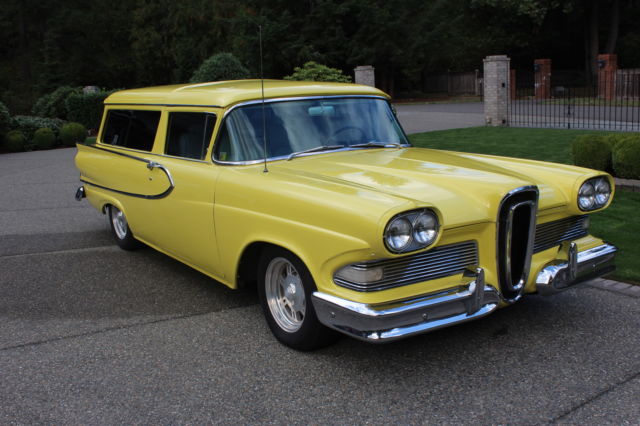



















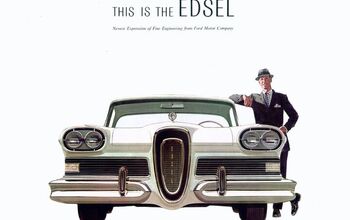

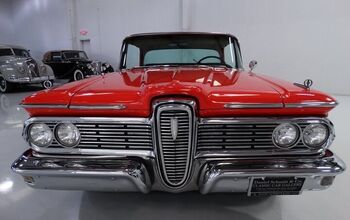
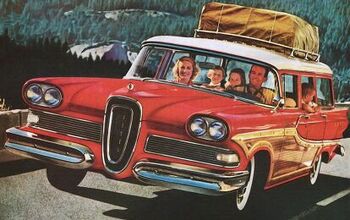
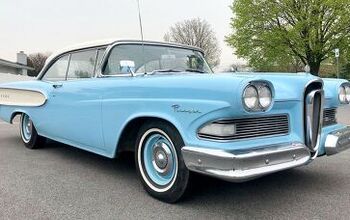










Comments
Join the conversation
Jay Lenos Garage has a video on Martha's house and Edsel wagon.
I know the yellow car well. The builder and previous owner was good friends with a guy that lived 4 houses down from me. He also shopped at the same independent auto parts store that I did. He sold it to the person who listed it 5-6 years ago. I found that out when I found an ad for some Mustang wheels on Craigslist and went to pickup them up. Those pictures were definitely taken in his driveway. So either that ad has been up for years or he is stretching the truth about how long he has owned it.